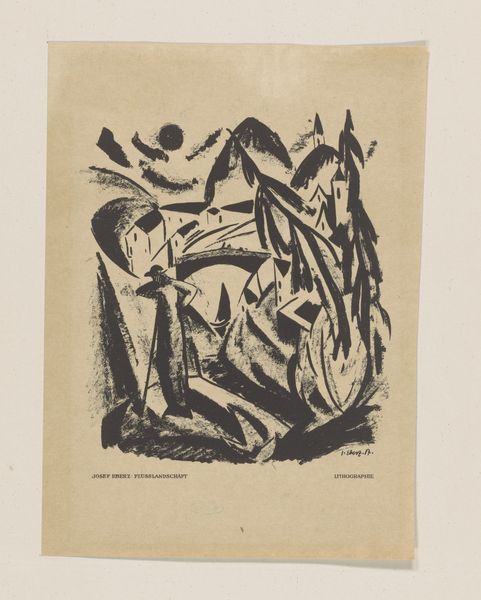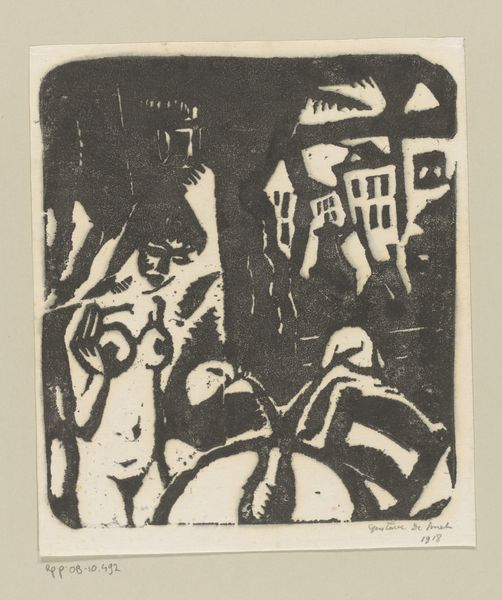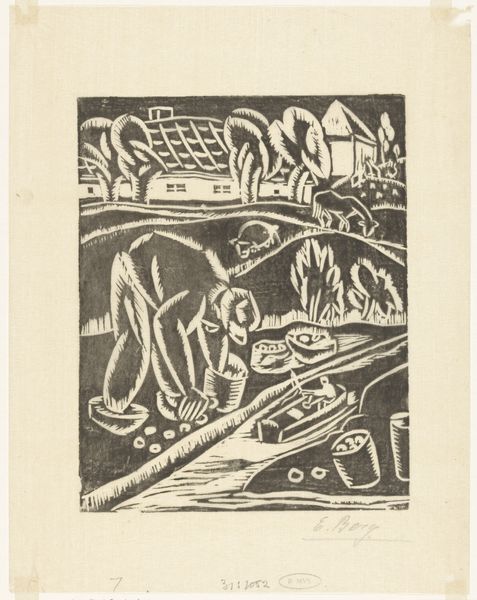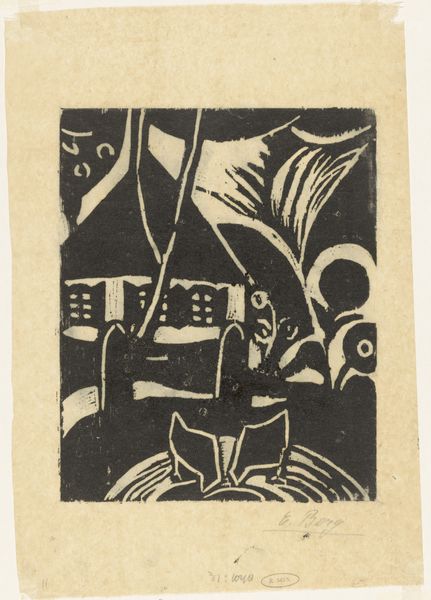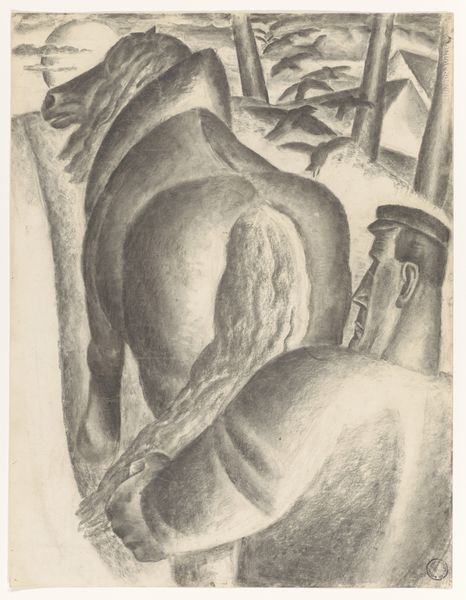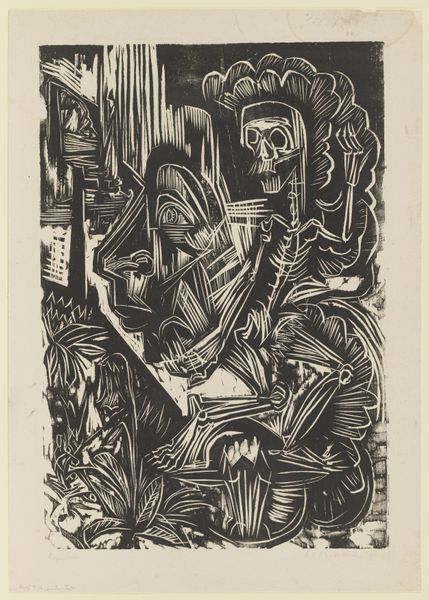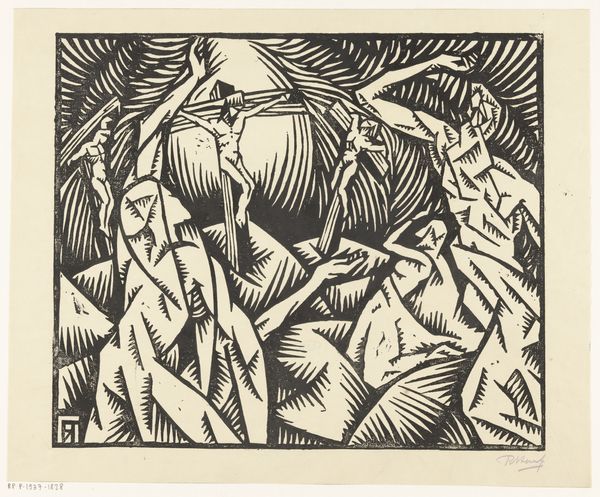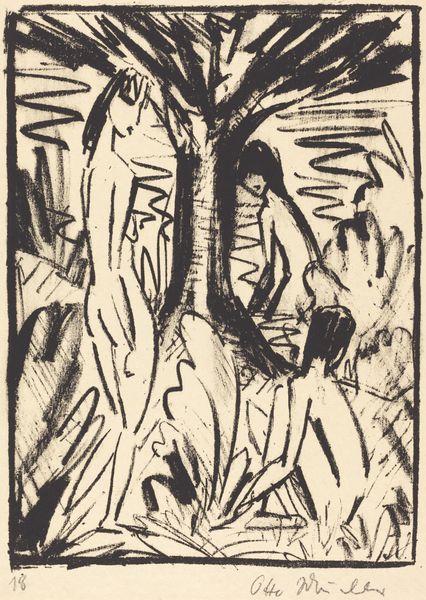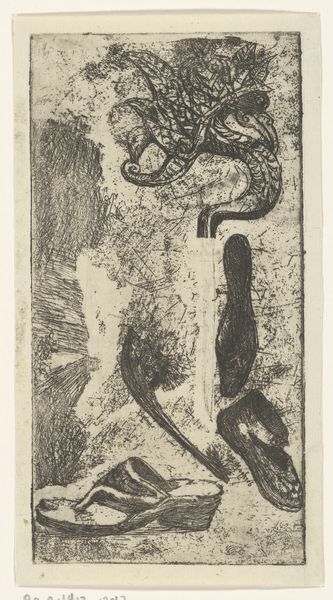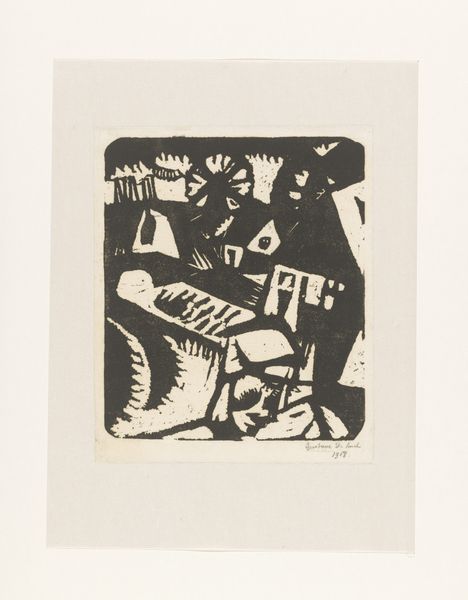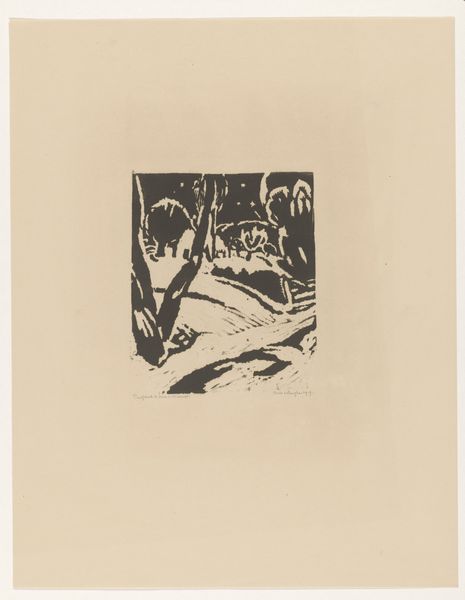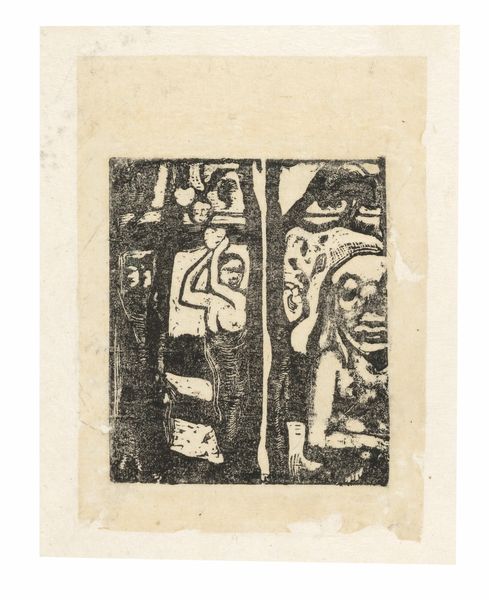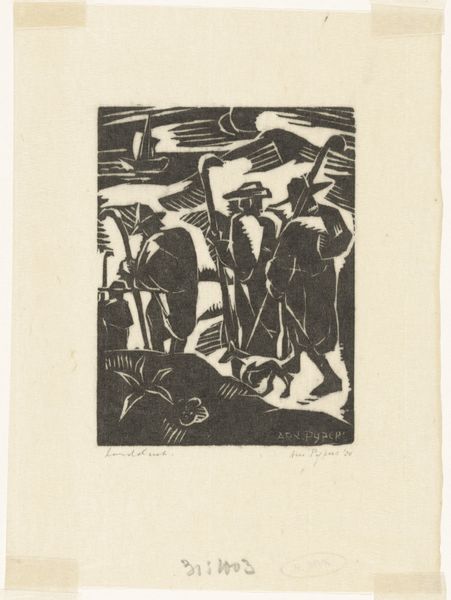
print, woodcut
# print
#
landscape
#
figuration
#
expressionism
#
woodcut
#
genre-painting
#
modernism
Dimensions: height 155 mm, width 90 mm, height 260 mm, width 153 mm
Copyright: Rijks Museum: Open Domain
Curator: This woodcut, titled "Landarbeiders," or "Farm Workers," was created in 1924 by Jo Bezaan, and it is now held here at the Rijksmuseum. What are your initial impressions? Editor: It's incredibly stark. The high contrast really emphasizes the laborious aspect of farm work. I notice the repetition of strong, diagonal lines gives the piece a sense of dynamism, almost frenetic energy. Curator: Indeed. Bezaan, working within a modernist and Expressionist vein, certainly highlights the working class, offering a sympathetic view. This piece dates to a period of increasing industrialization in the Netherlands, yet here, Bezaan draws our attention to the agricultural roots of Dutch society. Editor: And the formal elements strongly support that thematic emphasis. The restricted palette of black and white flattens the forms and makes everything feel weighty, grounded. The rough carving of the woodblock adds texture, mimicking the earth they toil in. Curator: Absolutely. And there's a certain tension created by the cropping, too. The composition feels confined, trapping these laborers in their unending work, which is quite common in social art in those years after World War I. Do you find any connections to other prints from the Expressionist movement, especially considering Bezaan’s connection to the artistic circles? Editor: There are clear visual relationships, particularly in the emphasis on stark contrasts and simplified forms to convey emotional weight. It reminds me, aesthetically at least, of some German Expressionist woodcuts of the period. But where those often focused on urban alienation, this centres on rural life and labor. Curator: Yes, he flips the script! And although Bezaan’s style may echo trends on the Continent, the focus remains firmly on the specific conditions of laborers in his region. By situating art as a public commentary on the dignity, labor, and material conditions, especially during times of rapid socio-economic change, artists helped to reify and idealize laborers as vital members of the public. Editor: It truly resonates. Bezaan makes an impactful statement utilizing graphic language and attention to technique. It all connects and serves his message. Curator: Exactly. Art becomes a record. A perspective. It is always interesting how a print like this can compress the views to the people and place together! Editor: Indeed! Now that I think about it, I leave with a strong and vivid appreciation for those laborers.
Comments
No comments
Be the first to comment and join the conversation on the ultimate creative platform.
